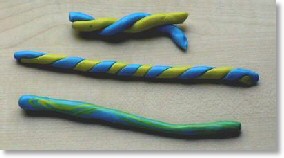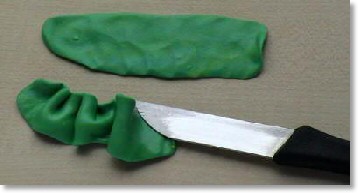

|
|
||
|---|---|---|
|
Modeling To make i.e. Fimo Classic easier to use you can add MixQuick. This is a neutral polymer clay, which does not affect the colour of your work piece. Itís not recommended to knead all of one colour at once, knead the clay in two or more parts, it will be easier and quicker to mould. Make rolls of the clay and braid them, roll again and repeat this. Mixing red and yellow makes orange You can of course mix all colours, Fimo and Creall-therm alike. By using other quantities you will obtain beautiful shades (see the colour wheel and index) on the tools page. Pastels
Candy cane effect Marmor effect Basic forms
a. Ball; roll the clay between your hands and make
a ball (several sizes) |
||
|
|
||
|
Books can also be found on the internet, see at "links"
or at this site:
|

Copyright(c) 2003-2011 FIMO-FRUTSELS / Els Bleijenberg. All rights reserved.











